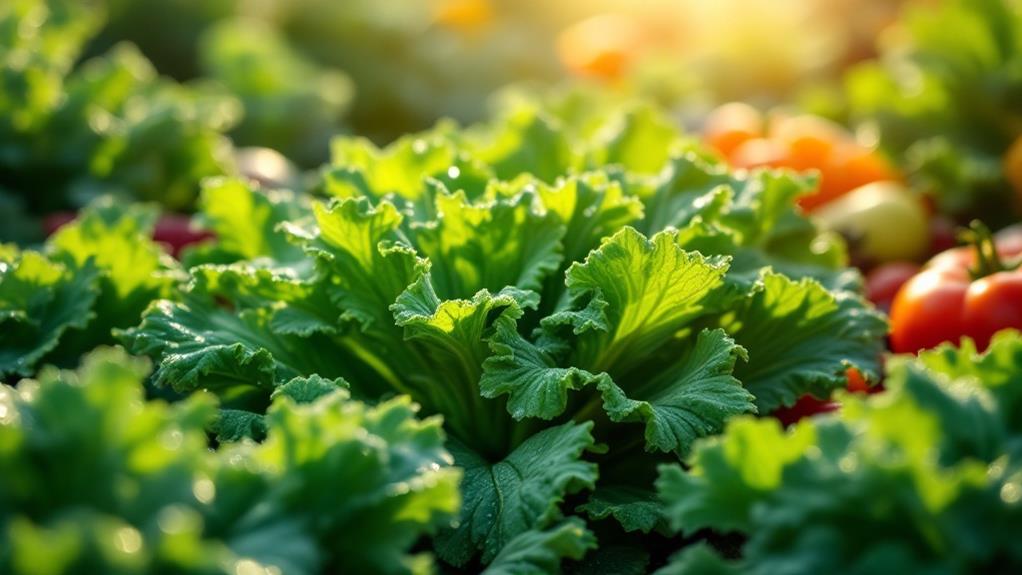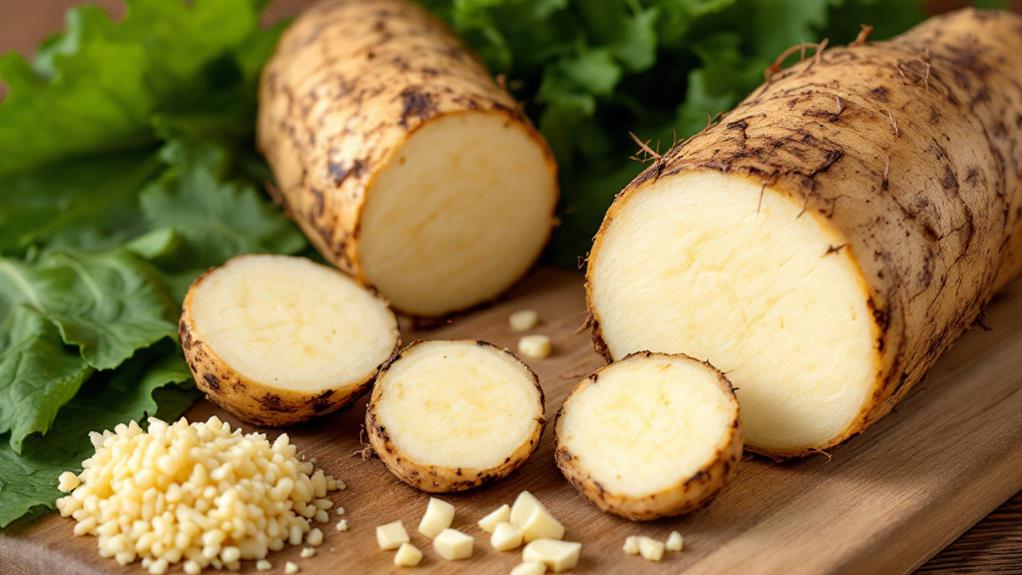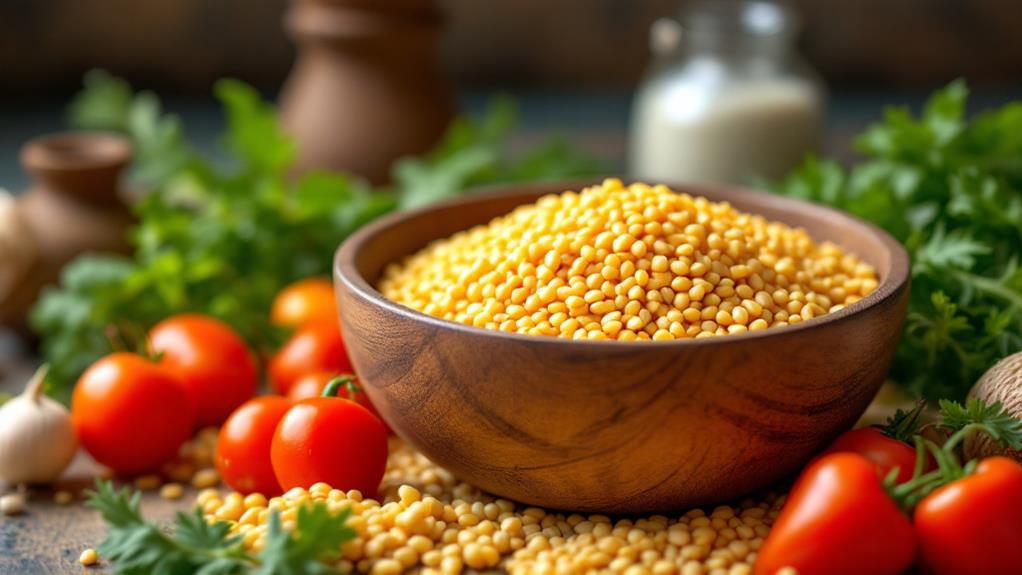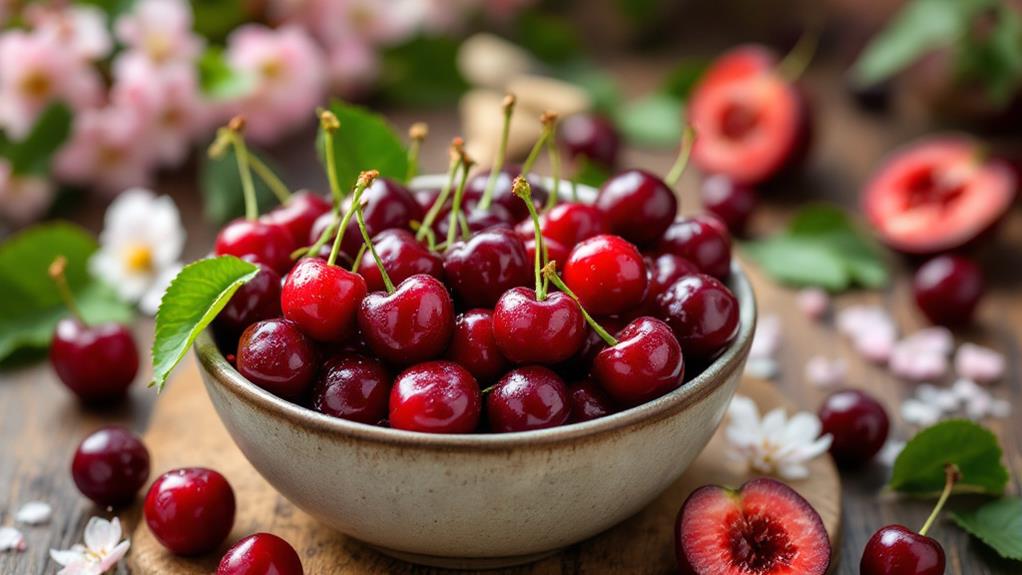Everything About Nopal: Health Benefits and Ways to Eat It
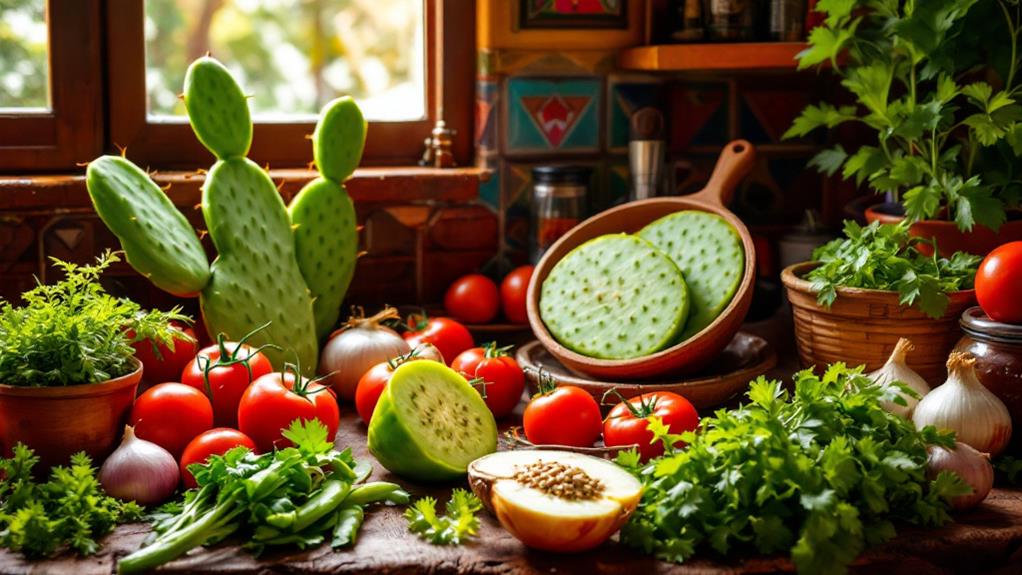
Investigate the wonders of nopal, a staple of Mexican cuisine with outstanding health benefits. It's low in calories but high in dietary fiber, vitamins, and antioxidants. Eating nopal can improve digestion, reduce cholesterol, and help manage blood sugar, making it excellent for weight management and metabolic health. You can grill or sauté nopales for salads and tacos, blend fresh nopal in smoothies, or use nopal powder in baked goods for added fiber. With its anti-inflammatory and antimicrobial properties, nopal supports comprehensive wellness. Ready to learn more about incorporating this versatile cactus into your diet? There's so much more to it!
Understanding the Nopal Cactus
The nopal cactus, commonly known as the prickly pear cactus, is a staple in Mexican cuisine and celebrated for its nutritional benefits. You might be familiar with its edible pads, called nopales, which are the young cactus paddles offering a texture similar to okra. These can be grilled, sautéed, or even juiced, making them a versatile supplement to your meals. The health benefits of including nopal in your diet are abundant, starting with its high content of dietary fiber. With 2 grams of fiber per cup, it's an excellent option for promoting digestive health and maintaining a healthy weight.
Moreover, the nopal cactus is rich in crucial vitamins like A, C, and E, which contribute to your general well-being. These vitamins, along with minerals such as magnesium and calcium, make the nopal an impressive plant for enhancing your diet. Don't forget the prickly pear fruit, another part of the cactus that brings a sweet flavor to your palate. You can enjoy it raw or use it in beverages, offering yet another way to benefit from the nopal cactus's nutritional attributes. Welcome this sustainable plant and enjoy its diverse health advantages.
Nutritional Profile of Nopal
Investigate the nutritional profile of nopal, and you'll quickly see its significance as a low-calorie, nutrient-dense food. With fresh nopales offering just 14 kcal per cup, they're a fantastic option if you're monitoring your calorie intake. Despite being low in calories, nopales are high in dietary fiber, providing about 2 grams per cup. This fiber not only aids digestion but also improves satiety, making you feel full longer, which can be beneficial for weight management.
Nopales shine with their rich array of key vitamins and minerals, including vitamin C, magnesium, and calcium, all important for your nutritional health. Magnesium supports muscle function, while calcium is significant for bone health. Their vitamin content further increases your daily nutrient intake, contributing to overall well-being.
The versatility of nopal allows you to enjoy it in different forms, regardless of being fresh, dried, or pickled. Dried nopales, for instance, pack around 6 kcal per 3-gram serving, still retaining significant fiber. Meanwhile, pickled nopales offer approximately 40 kcal per 130-gram serving, along with vitamins A and E. This adaptability guarantees you can easily incorporate nopal into a range of meals, maximizing its health benefits.
Key Health Benefits
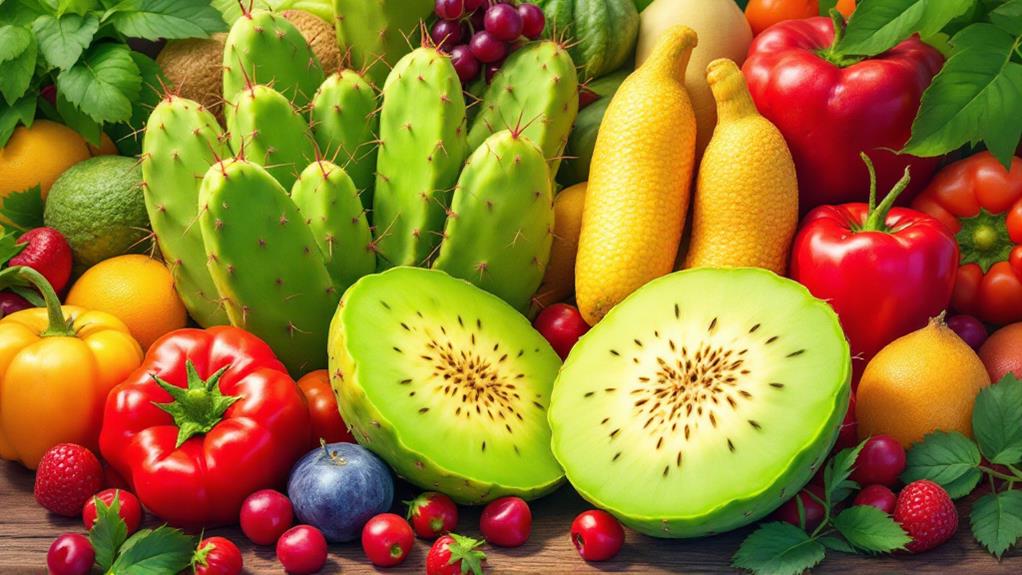
Frequently celebrated for its impressive health benefits, nopal cactus deserves a spot in your diet for multiple reasons. Initially, it's high in dietary fiber, which not only aids digestion but also plays an essential role in lowering blood sugar levels. This makes it particularly beneficial for those managing type 2 diabetes, as it helps reduce post-meal glucose spikes.
Additionally, nopal cactus is rich in antioxidants, including flavonoids and vitamin C, which help combat oxidative stress. These antioxidants can potentially lower your risk of cancer and reduce DNA damage. By incorporating nopal cactus into your diet, you're not just supporting your blood sugar levels but also fortifying your body against harmful free radicals.
Moreover, studies show that nopales can effectively lower total cholesterol levels, promoting better heart health and reducing the risk of cardiovascular disease. Its anti-inflammatory properties may also help alleviate symptoms of chronic conditions like arthritis, contributing to general health improvement.
The nopal cactus's high water content and low calorie count make it an excellent choice for weight management. It promotes satiety while aiding in hydration, ensuring you stay full and refreshed without unnecessary calorie intake.
Nopal and Blood Sugar Control
Anyone seeking to manage their blood sugar levels should consider incorporating nopal cactus into their diet. This prickly pear cactus has demonstrated impressive results in helping control blood sugar, especially after meals. Studies show that consuming nopal before meals can reduce postprandial blood glucose spikes by up to 48%. For individuals with type 2 diabetes, the high fiber content in nopal slows sugar absorption in the bloodstream, making it a valuable supplement to your dietary plan.
Nopal's effectiveness in regulating glucose levels is largely due to its soluble fiber and bioactive compounds. These components not only help improve insulin sensitivity but also contribute to better metabolic health markers. In a small study, participants who consumed 300g of nopal before meals saw significant reductions in both serum insulin and blood glucose levels. This suggests that regular consumption of nopal can be a strategic move for those managing diabetes.
Furthermore, the benefits of nopal extend beyond blood sugar control. It has been linked to improved cholesterol levels and improved gastrointestinal health, supporting general metabolic health. Incorporating nopal into your meals could be an effective strategy in promoting balanced blood sugar levels and general well-being.
Culinary Uses of Nopales
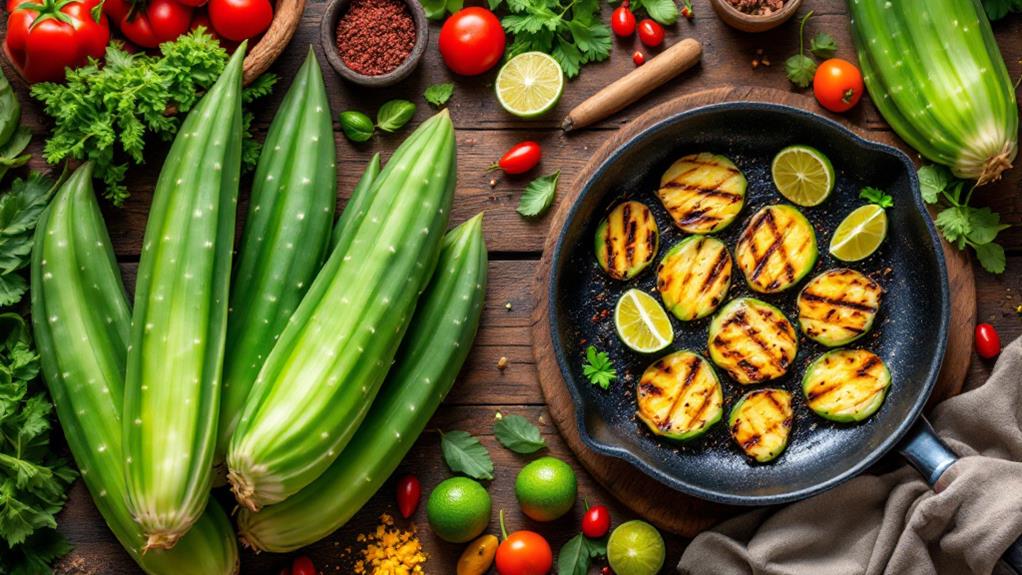
In the domain of incorporating nopales into your meals, there are several delicious options to investigate. You can grill, sauté, or boil nopales to add a unique texture and flavor to your dishes. They're a adaptable vegetable, often found in salads, tacos, and scrambled eggs. When diced, fresh nopales, known as nopalitos, resemble okra in texture and can be enjoyed raw in salads.
The prickly pear fruit, from the same cactus, offers another culinary delight. You can eat it raw or juice it for invigorating beverages and desserts. Furthermore, nopal powder is gaining popularity in health foods, enhancing the nutritional profile of tortillas and chips with its high fiber content. These diverse culinary uses of nopales not only enrich your meals but also bring the health benefits of nopal into your diet.
Popular recipes featuring nopales include Nopales a la Mexicana, where cooked nopales mix with tomatoes, onions, and spices, creating a flavorful side dish. While exploring these recipes, you'll also tap into traditional medicine's wisdom, as nopales have long been valued for their nutritional benefits. Enjoy experimenting with this extraordinary vegetable in your kitchen!
Safety Precautions
When incorporating nopal into your diet, it's essential to be aware of certain safety precautions to guarantee a healthy experience. The nopal cactus offers numerous health benefits, but consuming it in excess can lead to gastrointestinal discomfort like diarrhea or nausea due to its high fiber content. To avoid this, moderation is key. Furthermore, if you're taking diabetes medications, consult your healthcare provider before adding nopal to your meals. It can improve the effects of these medications, potentially leading to hypoglycemia.
Be vigilant about possible allergic reactions, though they're uncommon. Watch for symptoms such as skin rashes, swelling, or more severe reactions that require immediate medical attention. Proper preparation of nopales is important to avoid skin irritation from the cactus spines. Confirm thorough cleaning and cooking of the pads before consumption to prevent any discomfort.
For those who are pregnant or breastfeeding, it's advisable to seek professional advice before consuming nopal. This helps guarantee safety and prevents potential risks for both mother and child. By adhering to these safety precautions, you can enjoy the health benefits of nopal cactus without compromising your well-being.
Nopal in Traditional Medicine

The nopal cactus, a staple in Mexican herbal medicine, has long been valued for its healing properties. If you're looking into traditional remedies, you'll find that nopal has a rich history of use for diverse health benefits. One of its primary roles is in treating gastrointestinal issues like diarrhea and stomach ulcers. Thanks to its high fiber and mucilage content, nopal can soothe and regulate your digestive system.
Moreover, nopal's antimicrobial properties make it a go-to in folk remedies for wound healing and fighting infections. It's not just about external ailments; nopal also boasts anti-inflammatory properties, which can help alleviate symptoms of arthritis and muscle strains. If you've got a cough or cold, you might consider prickly pear juice, traditionally used for its antiviral effects on respiratory ailments.
In the domain of managing diabetes, nopal stands out. It's recognized for helping regulate blood sugar levels and improving insulin sensitivity. By incorporating nopal into your routine, you might find a natural way to support your health. Regardless of whether it's through traditional medicine or modern applications, nopal offers a blend of practical health benefits that have stood the test of time.
Research and Studies
Have you ever wondered about the scientific backing for nopal's health claims? Recent studies have illuminated the nopal cactus and its impressive health benefits. Clinical trials have shown that nopal can effectively reduce postprandial blood glucose levels, making it a promising aid in diabetes management. If you're concerned about heart health, you'll be interested to know that research indicates consuming nopal leads to a decrease in total cholesterol levels, which underscores its potential cardiovascular benefits.
The nopal cactus isn't just about managing blood sugar and cholesterol; it also boasts strong antioxidant properties. A 2019 review highlighted nopal's anti-inflammatory and antioxidant effects, suggesting they might be beneficial for multiple health conditions. However, more human studies are needed to confirm these effects.
Moreover, nopal's antimicrobial properties have been demonstrated in studies, showing its ability to combat bacteria linked to foodborne illnesses. This makes it a potential ally in maintaining gut health. Excitingly, investigations into nopal's neuroprotective effects suggest its compounds may protect nerve cells from damage, offering hope for future neurological health applications. While the findings are promising, ongoing research is crucial to fully comprehend nopal's varied health benefits.
Incorporating Nopal Into Diet
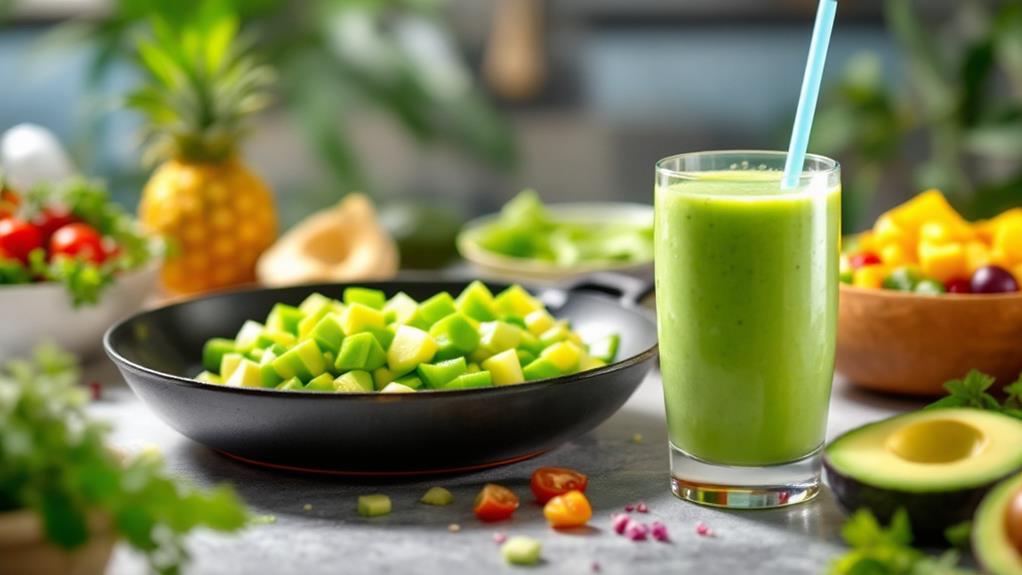
Incorporating nopal into your diet is simpler than you might think and offers a host of health benefits. This adaptable vegetable can be easily integrated into your meals in numerous ways. Start by grilling or sautéing nopal pads and tossing them into salads, tacos, or scrambled eggs, enhancing your dishes with extra fiber and nutrients. For a revitalizing twist, blend fresh nopal with fruits like pineapple or cucumber to make smoothies that retain all of the cactus's health benefits.
If you're into baking, consider using nopal powder. It's a great way to enhance the fiber content of baked goods or snacks while adding vital vitamins and minerals. Another tasty option is pickled nopales, which can serve as a tangy condiment in multiple recipes, adding flavor and texture without sacrificing the nutritional value.
Incorporating nopal into your diet can greatly promote digestive health thanks to its high fiber content. It also supports weight management and helps regulate blood sugar levels, making it a valuable inclusion in your routine. So, regardless of whether you prefer it cooked, blended, or pickled, nopal offers a delicious and healthful way to enhance your meals.

